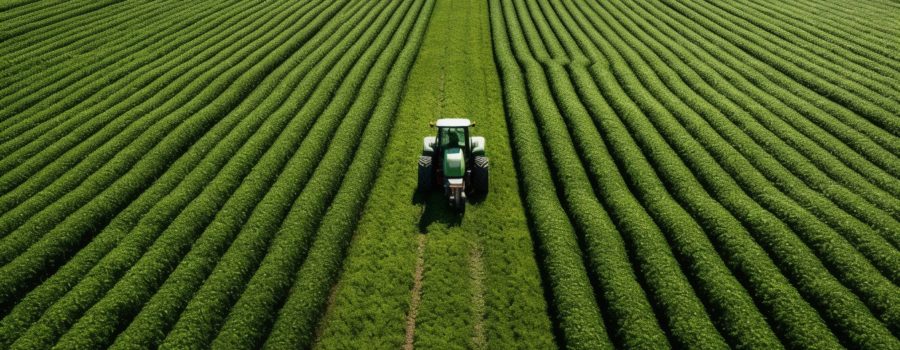The Future of Precision Agriculture: AI and Drones Revolutionizing Farm Practices
Welcome to the era where Artificial Intelligence (AI) and drone technology are transforming precision agriculture. This comprehensive post delves into how these cutting-edge technologies bring revolutionary changes in optimizing agricultural processes, enhancing yield quality & quantity, reducing costs, and enabling accurate monitoring for plant health and disease detection. We also explore emerging innovations like autonomous farming vehicles or ADAM systems.
The Rise of AI in Precision Agriculture
AI’s role in precision agriculture has grown exponentially over the years. With the ability to analyze vast amounts of data generated by modern farms, AI algorithms can provide valuable insights and recommendations to farmers. By leveraging machine learning and predictive analytics, AI can optimize various agricultural processes, including planting, irrigation, fertilization, and pest control. This not only improves efficiency but also reduces resource wastage and environmental impact. AI-powered systems can monitor weather patterns, soil conditions, and crop health in real-time, allowing farmers to make data-driven decisions and take proactive measures to maximize yield and minimize losses.
AI for Optimizing Agricultural Processes
AI algorithms can analyze vast amounts of data generated by modern farms, including historical weather data, soil composition, crop characteristics, and pest infestation patterns. By processing this data, AI can identify optimal planting and harvesting times, predict disease outbreaks, and recommend the most effective pest control strategies. AI-powered systems can also automate irrigation schedules based on real-time weather forecasts and soil moisture levels, ensuring that crops receive the right amount of water at the right time. This level of precision and automation not only improves crop yield and quality but also reduces water and fertilizer usage, resulting in cost savings and environmental sustainability.
Drone Technology: A Game-Changer in Precision Agriculture
In recent years, drones have become an integral part of precision agriculture. With their ability to capture high-resolution aerial imagery and collect data from multiple sensors, drones enable farmers to monitor their fields more efficiently and accurately. Drones equipped with specialized cameras can capture detailed images of crops, allowing farmers to assess plant health, detect nutrient deficiencies, and identify early signs of disease or pest infestation. This early detection enables timely intervention, preventing the spread of diseases and minimizing crop losses. Drones can also be used to create digital elevation models and generate 3D maps of farmland, providing valuable insights into soil health, drainage patterns, and topographical variations. This information helps farmers optimize irrigation systems, plan field layouts, and implement precision agriculture techniques.
Drones for Enhanced Yield Quality & Quantity
With their aerial view capability, drones can monitor large areas of farmland quickly and efficiently. This allows farmers to identify variations in crop health and growth patterns across different sections of their fields. By analyzing this data, farmers can make informed decisions about irrigation, fertilization, and other agronomic practices, ensuring that crops receive the necessary nutrients and care. Drones equipped with multispectral or thermal cameras can provide valuable insights into crop stress, water distribution, and pest infestations that may not be visible to the naked eye. This enables targeted interventions, reducing the need for blanket treatments and minimizing the use of pesticides and fertilizers. As a result, farmers can achieve higher crop yields, improved quality, and reduced environmental impact.
Autonomous Farming Vehicles: The Future of Precision Agriculture
In addition to AI and drones, autonomous farming vehicles are emerging as a game-changer in precision agriculture. These vehicles, also known as ADAM systems (Autonomous Data Acquisition and Manipulation), are equipped with advanced sensors, GPS technology, and AI algorithms. They can perform a range of tasks, including planting, spraying, harvesting, and soil analysis, without human intervention. By leveraging AI and machine learning, ADAM systems can optimize farming operations, reduce labor costs, and improve overall efficiency. These autonomous vehicles can navigate fields with precision, avoiding obstacles and adjusting their operations based on real-time data. They can also collect and analyze data on soil composition, moisture levels, and crop health, providing valuable insights for decision-making. With the integration of AI, drones, and autonomous farming vehicles, the future of precision agriculture looks promising, with increased productivity, sustainability, and profitability for farmers.
Conclusion
AI and drone technology are revolutionizing precision agriculture by optimizing agricultural processes, enhancing yield quality & quantity, reducing costs, and enabling accurate monitoring for plant health and disease detection. The integration of these cutting-edge technologies opens up new possibilities for farmers to achieve higher crop yields, improved sustainability, and reduced environmental impact. As AI continues to evolve and drones become more advanced, the future of precision agriculture holds immense potential for transforming the way we grow food and manage our agricultural resources. Embracing these technologies and staying updated with the latest trends in precision agriculture will be crucial for farmers to stay ahead in this rapidly evolving industry.


Leave a Reply
Your email is safe with us.